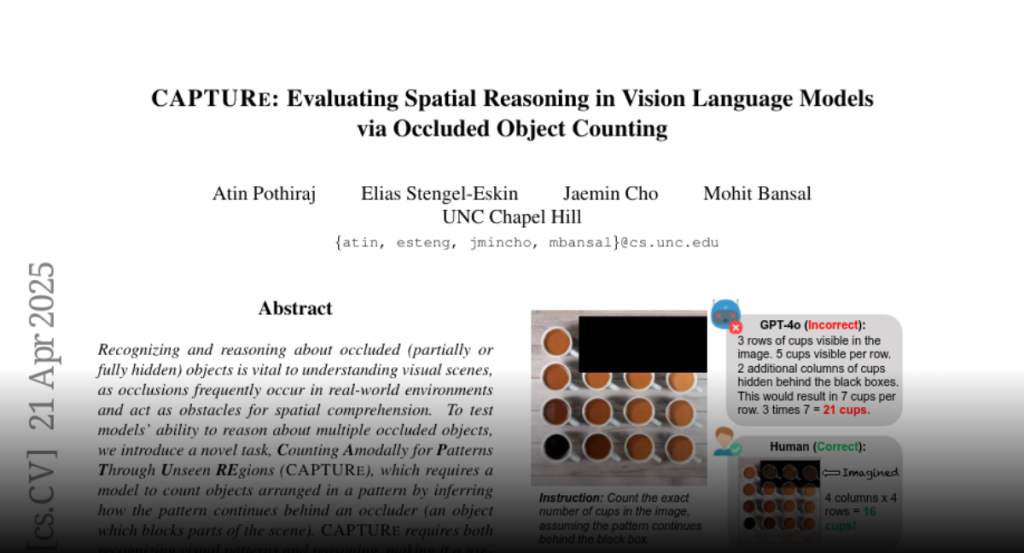Recognizing and reasoning about occluded (partially or fully hidden) objects
is vital to understanding visual scenes, as occlusions frequently occur in
real-world environments and act as obstacles for spatial comprehension. To test
models’ ability to reason about multiple occluded objects, we introduce a novel
task, Counting Amodally for Patterns Through Unseen REgions (CAPTURe), which
requires a model to count objects arranged in a pattern by inferring how the
pattern continues behind an occluder (an object which blocks parts of the
scene). CAPTURe requires both recognizing visual patterns and reasoning, making
it a useful testbed for evaluating vision-language models (VLMs) on whether
they understand occluded patterns and possess spatial understanding skills. By
requiring models to reason about occluded objects, CAPTURe also tests VLMs’
ability to form world models that would allow them to fill in missing
information. CAPTURe consists of two parts: (1) CAPTURe-real, with manually
filtered images of real objects in patterns and (2) CAPTURe-synthetic, a
controlled diagnostic with generated patterned images. We evaluate four strong
VLMs (GPT-4o, Intern-VL2, Molmo, and Qwen2-VL) on CAPTURe, finding that models
struggle to count on both occluded and unoccluded patterns. Crucially, we find
that models perform worse with occlusion, suggesting that VLMs are also
deficient in inferring unseen spatial relationships: even the strongest VLMs
like GPT-4o fail to count with occlusion. In contrast, we find that humans
achieve very little error on CAPTURe. We also find that providing auxiliary
information of occluded object locations increases performance, underscoring
that the model error comes both from an inability to handle occlusion as well
as difficulty counting in images.

